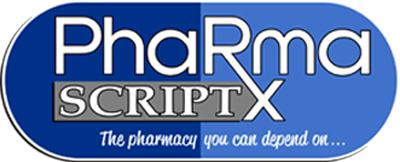Anti-Aging
Autism
Autism Spectrum Disorder (ASD) is a disorder of neural development, characterized by impaired social interaction and communication. Parents usually notice signs of autism within the first two years of their child's life. The signs of autism usually develop gradually, but some instances the child develops normally, then regress. Typically children with autism will not be living independently, but there are some cases of people with autism becoming successful. It also has a strong genetic basis.
Nutritional Therapy for Autism Treatment:
Most children with autism need an increased need for vitamins, minerals, and amino acids
Examples of Customized Medications to Treat Autism:
- Allithiamine (TTFD)
- Alpha-Lipoic acid
- Amphotericin-B (antifungal)
- BLT (topical anesthetic)
- DMPS (chelation therapy)
- DMSA (chelation therapy)
- EDTA (chelation therapy)
- Fluconazole (antifungal)
- Low-dose Naltrexone (LDN)
- Vitamin B12 (methylcobalamin)
- N-acetylcysteine
- Nystatin (antifungal)
- Reduced L-Glutathione
- Vitamin C (ascorbic acid)
- Secretin
- Unit dosed MMR vaccine
Bio-Identical Hormone Restoration
Clinical Trials
At PharmaScript of Shelby, our staff can assist your Company or University with drug research projects by preparing matching placebos.
Dentistry
At PharmaScript, we work together with Dentists and their patients to solve problems by compounding medications
Miracle Mouth Wash
Compounded dental mouthwashes offer many different The idea of Miracle Mouth Wash is to combine ingredients to treat a variety of oral conditions.
The most popular forms of Miracle Mouth Wash contain viscous lidocaine, as a topical anesthetic, diphenhydramine as an anti-inflammatory, and Maalox to help coat tissues in the mouth. Other variations often include anti-fungals, corticosteroids and/or antibiotics.
Common ingredients Found in Miracle Mouth Wash:
- Diphenhydramine - an antihistamine to reduce inflammation
- Glucocorticoids - to reduce inflammation
- Lidocaine - a local anesthetic to relieve pain
- Maalox - an antacid formulation which acts as a coating agent
- Nystatin - an anti-fungal for candidiasis
- Sucralfate - a coating agent
- Tetracycline - an antibiotic
- Erythromycin - an antibiotic
Compounded Medications for Dentistry
- lip balms for viral lesions
- topical muscle relaxants/analgesics
- topical anesthetics
- non-staining antibacterial rinses
- oral sedation in lollipops and freezer pops
- lollipops for oral thrush
- mouth rinses for aphthous ulcers or chemotherapy-induced stomatitis
- mouth rinse to stop oral bleeding during dental procedures for patients who take anticoagulants
- dry socket preparations
- “mucosal bandages” to cover ulcerated, infected or tender mucosa
- lozenges that help to prevent gagging
References:
- a b c d Tom, Wah-Chih (2007-07-03). "Magic Mouthwash". Pharmacist's Letter/Prescriber's Letter 23 (230703): 1–5. Retrieved 2009-12-09.
- Otterholt, Randall. "Magic Mouthwash". Retrieved 2009-12-05.
- "Magic Mouthwash". Pharmacist's Letter. Therapeutic Research Center. Retrieved 2009-12-05.
Dermatology
- Acne
- Athlete’s Foot
- Chemical Peels
- Diaper Rash/Incontinence
- Head Lice and Scabies
- Molluscum Contagiosum
- Nail Removal
- Onychomycosis
- Pigmentation Abnormalities
- Plantar Warts
- Psoriasis
- Rosacea
- Scarring and Keloids
- Sun Protection/Photo-aged Skin/Wrinkles
- Topical Anesthetics
Hormone Replacement
Human Chorionic Gonadotropin (HCG)
Institutional
Pain Management
Palliative Care
Pediatrics
Podiatry
Sinus
Sports Medicine
Sterile Compounding
Thyroid Imbalance
Veterinary
Wound Care
